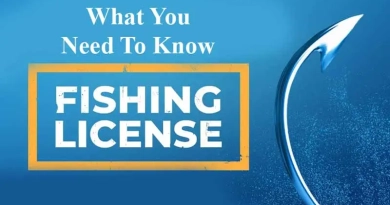
How Do I Properly Hold A Canoe Paddle?
Holding a canoe paddle correctly is fundamental to efficient and effective paddling. Without the proper grip, your strokes can become inefficient, tiring, and less effective in controlling the canoe. Understanding the right way to hold the paddle is the first step toward mastering this timeless watercraft.
Common Mistakes and Proper Techniques
Understanding Paddle Anatomy
A canoe paddle consists of several parts: the top grip (or T-grip), the shaft, the throat (where the shaft meets the blade), and the blade itself. Knowing these parts helps in understanding how to hold and maneuver the paddle properly.
Proper Grip
- Top Hand Placement: Your top hand should firmly grip the T-grip at the end of the paddle. This hand is crucial for controlling the paddle’s direction and applying power during strokes.
- Bottom Hand Placement: Your bottom hand should grip the shaft of the paddle, closer to the blade. This hand provides the leverage needed for efficient strokes.
Common Mistakes
- Incorrect Hand Position: Many beginners grip the paddle too high or too low, causing inefficient strokes and faster fatigue. Ensure your top hand is at shoulder height for the most effective leverage (Dick’s Sporting Goods).
- Using Arm Muscles Too Much: Paddling should engage your core and torso, not just your arms. This reduces fatigue and increases the power and control of your strokes.
Proper Technique for Holding a Canoe Paddle
Step-by-Step Guide to Proper Grip
- Top Hand on the Grip: Place your top hand on the T-grip of the paddle. This hand should be level with your shoulder when the paddle is vertical.
- Bottom Hand on the Shaft: Place your bottom hand on the shaft, ensuring it’s wide enough apart from the top hand. Your arms should form a comfortable width slightly wider than your shoulders.
- Paddle Orientation: When holding the paddle vertically, the blade should be fully submerged in the water with the back of your top hand facing upward. Your bottom hand’s thumb should be facing upward along the shaft.
Implementing the Grip in Strokes
- Forward Stroke: Rotate your torso as you plant the blade in the water, using your top hand to push the paddle and your bottom hand to pull. This rotation engages your core muscles, providing power and reducing strain on your arms.
- J-Stroke: Essential for solo paddling, this stroke helps maintain a straight line. Begin with a normal forward stroke and then, just before the blade exits the water, twist the blade so it forms a “J” shape. This counteracts the natural tendency of the canoe to veer off course.
Resources and Tools Needed
- Canoe Paddle: Choose a paddle that fits your height and canoe type. For solo paddling, a shorter paddle might be preferable.
- Life Jacket (PFD): Always wear a personal flotation device for safety.
- Paddle Grips or Gloves: To enhance grip and reduce blisters during long paddles.
- Kneeling Pads: For added stability and comfort, especially during technical paddling or rough waters.
Wrapping Up the Journey
As the sun began to rise, casting golden hues over the tranquil lake, I felt a sense of readiness and anticipation. Holding the paddle correctly, with my hands positioned just so, I knew I was equipped for a smooth and efficient paddling experience. The journey on the water, with its potential challenges and rewards, awaited me.
So, as you prepare to embark on your canoeing adventures, remember this: mastering the basics of how to hold your paddle can transform your experience on the water. It’s not just about technique; it’s about connecting with the canoe, the water, and the rhythm of your strokes. Embrace the knowledge, practice with patience, and let the adventure unfold with every paddle stroke. Happy paddling!






